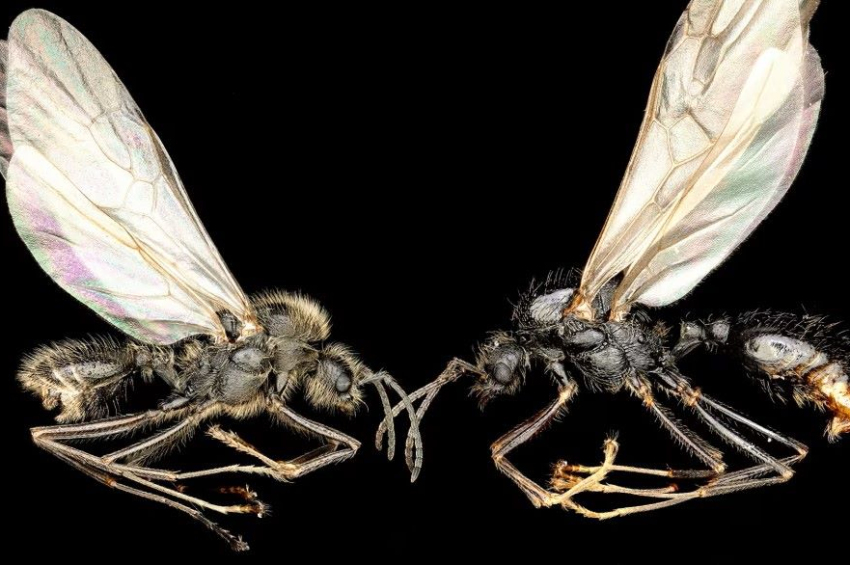Scientists discover ant queen laying eggs that develop into two different species
Researchers have discovered a bizarre reproductive strategy in Iberian harvester ants: queens can lay eggs that develop into two different species.
The study, published this month in the journal Nature, began when scientists noticed that colonies of Messor ibericus contained hybrid workers usually produced with another species, Messor structor. Yet in Sicily, no Messor structor colonies were nearby.
By analyzing 120 ant populations and sequencing hundreds of genomes, the team led by Jonathan Romiguier of the University of Montpellier, confirmed that Messor ibericus queens create both their own species and cloned males of Messor structor. Their eggs produce Iberian harvester queens and males, but nearly all workers are hybrids, forming the colony’s labor force.
More to read:
[video] Ants outperform humans in collective problem-solving test
Millions of years ago, Messor ibericus queens lost the ability to produce workers and began relying on Messor structor sperm.
Eventually, they developed the ability to clone Messor structor males from stored sperm, a process Romiguier calls “sexual domestication.”
“Much like humanity domesticating livestock, they eventually gained control over the reproduction of these males,” he said.
This strategy, called xenoparity, allows Iberian harvester ants to propagate another species’ genome through their own eggs. Genome sequencing showed that cloned males are nearly identical to Messor structor males but retain traces of Messor ibericus DNA.
In laboratory colonies, researchers directly observed queens producing both species: hairless Messor structor males and hairy Messor ibericus males. The team now seeks to understand the exact cellular mechanism by which queens purge their own DNA to generate cross-species clones.
More to read:
University of Hong Kong has counted how many ants there are on Earth
Iberian harvester queens’ eggs develop differently depending on whether the queen needs mates to produce future Iberian harvester ant queens, or a hybrid workforce that makes up 99% of the colony.
Messor ibericus and Messor structor once belonged to the same species, which split more than 5 million years ago. Nonetheless, they continued to live within the same geographical area in Europe, sometimes – like in France – in close proximity to each other.
Some experts say the system is both remarkable and risky.
“Having spread way out of reach of natural males of Messor structor, Messor ibericus queens evolved to clone these alien males under their own steam,” according to Jacobus Boomsma of the University of Copenhagen. “It stabilized the system, but at the expense of losing most genetic variation. So, in the long run this ant will likely go extinct.”




![[video] Guess who’s hiding more than 8 kilometers below the ocean’s surface?](/news_img/2025/11/13/news0_mediu.jpg)
![[video] Putin rules from shadows: Investigation finds Russian leader rarely works in Moscow](/news_img/2025/11/11/news1_mediu.jpg)

